- Industries & Machines Industries & Machines
- IIoT IIoT
- Service-Toll Processing Service-Toll Processing
- Material Material
- News News
- IR Information IR Information
-
Sustainability
Sustainability
Sustainability
- Introduction
- Sustaibality Policy - Mission Statement
- Editorial Policy
- Materiality & Strategy
- Technological contribution to a sustainable global environment
- Contributions towards a safer, more secure and prosperous society
- Sophistication of governance that supports business
- ESG Data Collection
- Sustainable Business Management ~ Finance
- Infromation Disclosure Based on TCFD Recommendations
- Jobs and Careers Jobs and Careers
-
About Us
About Us
About Us
- Corporate Vision
- Greetings (Company Introduction)
- Corporate Overview
- Corporate Profile
- Business Areas and Strengths
- Corporate History
- Hosokawa Micron Group
- Domestic Facilities
- Overseas Subsidiaries (Asia)
- Overseas Subsidiaries (Europe)
- Overseas Subsidiaries (America)
- Asian Agents
- Powder Technology Research Institute
- Industrial Property Rights
- Journals and Books
- Technical Information
- Annual Publication "Micromeritics"
- Compliance Charter
- Privacy Policy
- Cookie Policy
- Quality Principle

Industries & Machines
- TOP
- Industries & Machines
- Machines Search
- AGGLOMASTER AGM-SD
AGGLOMASTER AGM-SD
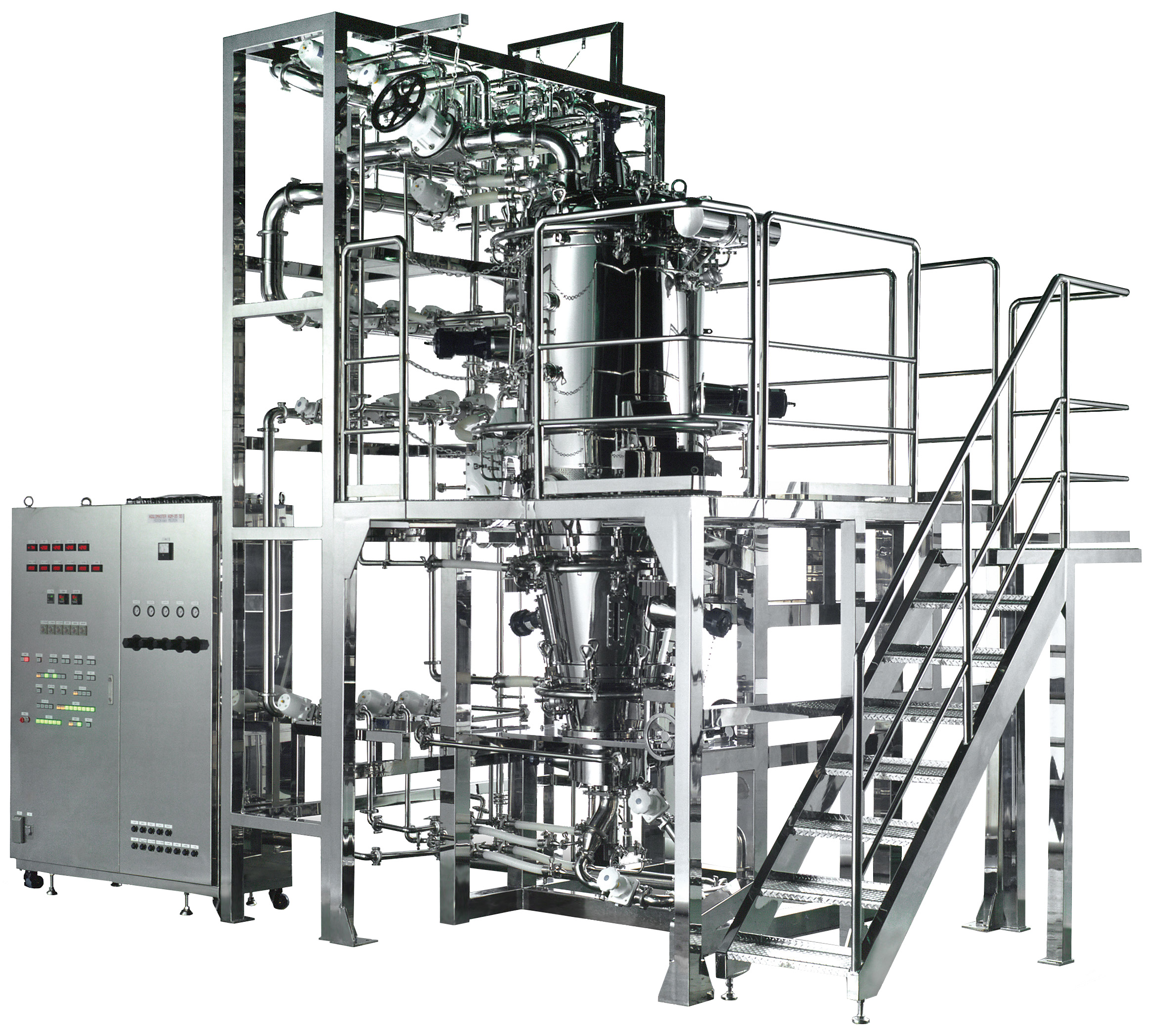
Summary
Conventional wet agglomeration is preceded with ‘spheronization’ and drying process after the wet extrusion of spray dried powder. AGM-SD can make spherical agglomerates from liquid feed on its own. AGM-SD can produce heavy agglomerates with apparent density: approx. 0.6-0.8 g/ml. Average particle size of AGM-SD product covers the range of 10-3000μm.
(AGGLOMASTER is a registered trademark of HOSOKAWA MICRON CORPORATION in Japan)
Principle
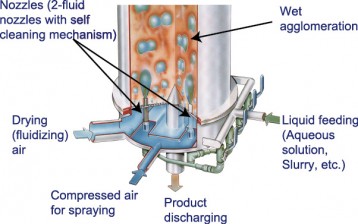
Fig.1 Schematic structure of AGM-SD
AGM-SD type does not require any mechanical movable parts in the fluidizing chamber. Two-fluid nozzle is set on the bottom of fluid-bed chamber to sprays liquid upwards to the fluidized-bed. The nozzle equips the jacket for heating or cooling media. This design allows any type of liquid to spray independent on the fluidizing gas temperature.
Agglomeration mechanism of liquid material (Example; particles for coating, pharmaceutical water slurry)
- The injected spray mist diameter is a droplet of 10μm. The droplet is instantly dried in hot gas upstream and collected by filter bags at the top of the fluidized bed.
- Filter bags are intermittently blown by reverse air jet. The fine particles are falling down to the fluid-bed zone and are coated by the sprayed mist. Wet particles are dried and grown to large agglomerates. This process is repeated again and again. This agglomeration process is called as “layering agglomeration”.
- Most of liquid material coats the surface of agglomerates and layering agglomeration proceeds. The large agglomerates show more spherical shape and denser properties.
Features
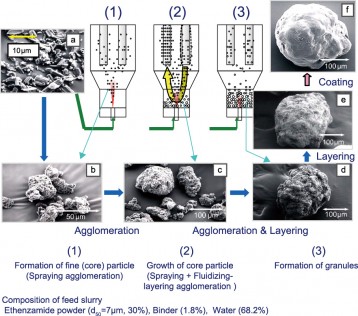
Fig.2 Agglomeration process by AGM-SD
-
Single unit produces agglomerates from liquid material by the combination of spray agglomeration and fluidized bed agglomeration by unique agglomeration cycle “Layering”.
The initial, running and maintenances cost is drastically reduce comparing to the conventional agglomeration process.
Big space-saving; comparing to conventional process; Spray dryer + agglomerator + spheronization + final dryer. -
Realize the value-added agglomerates. Various particle design is possible depends on the purpose, such as spherical, heavy agglomerates or new value addition by coating to agglomerates.
The layering agglomeration mechanism can make heavy and spherical agglomerates. It gives cost saving for transportation and packing. -
Possible to batch or continuous operation. Batch operation is suitable for small amount of production for various materials. On the other hand, semi-continuous operation is suitable for mass production.
-
Easy cleaning
Almost no residual products remaining inside the chamber by applying unique bottom discharge port.
Applications
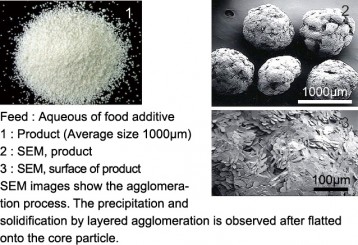
Fig.3 Agglomeration of food additives by AGM-SD

Fig.4 Agglomaster for drying the natural pigment
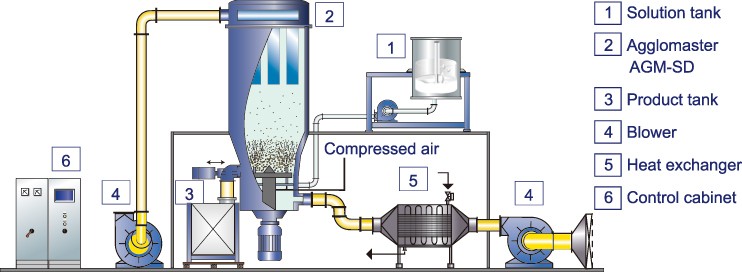
Fig.5 Flow of AGM-SD
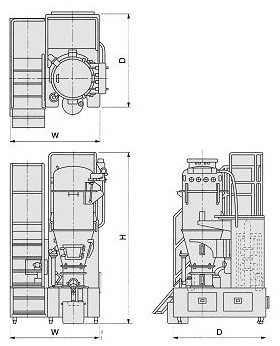
Fig.6 Dimensions of AGM-PJ/SD

Feel free to contact us. if you have any questions or concerns.

